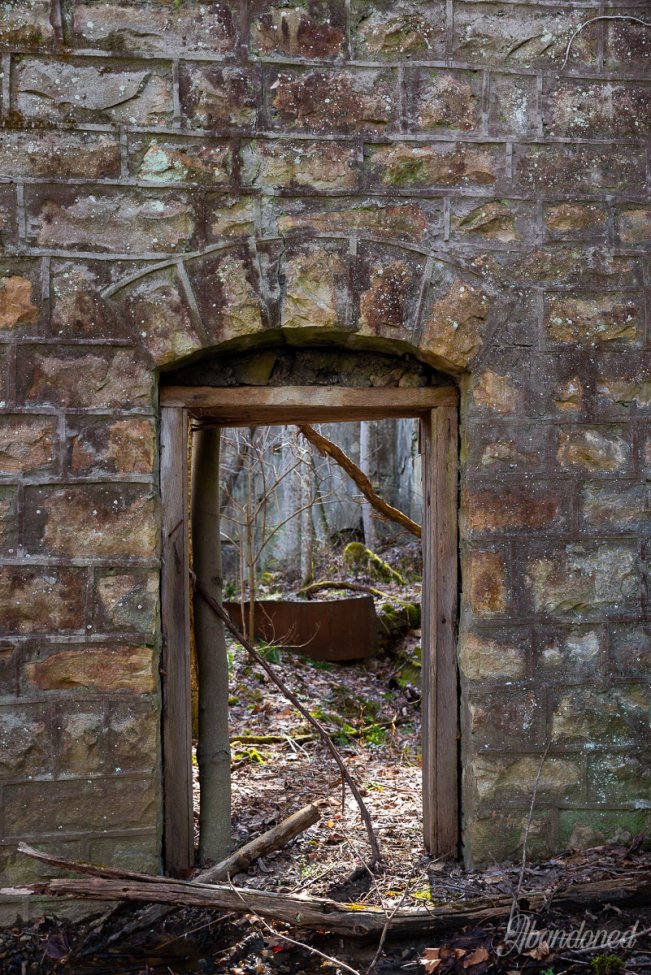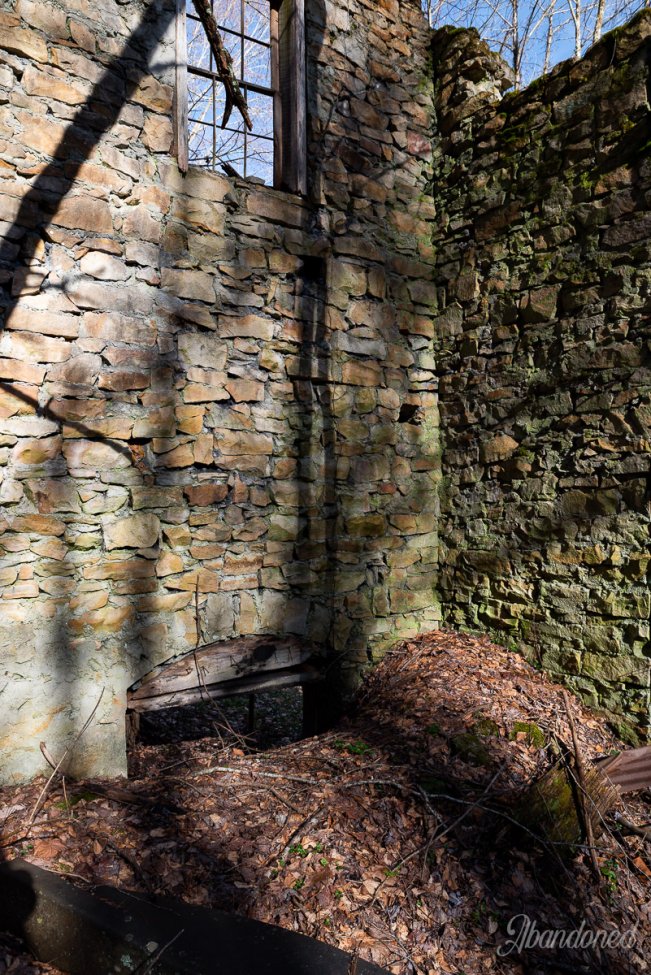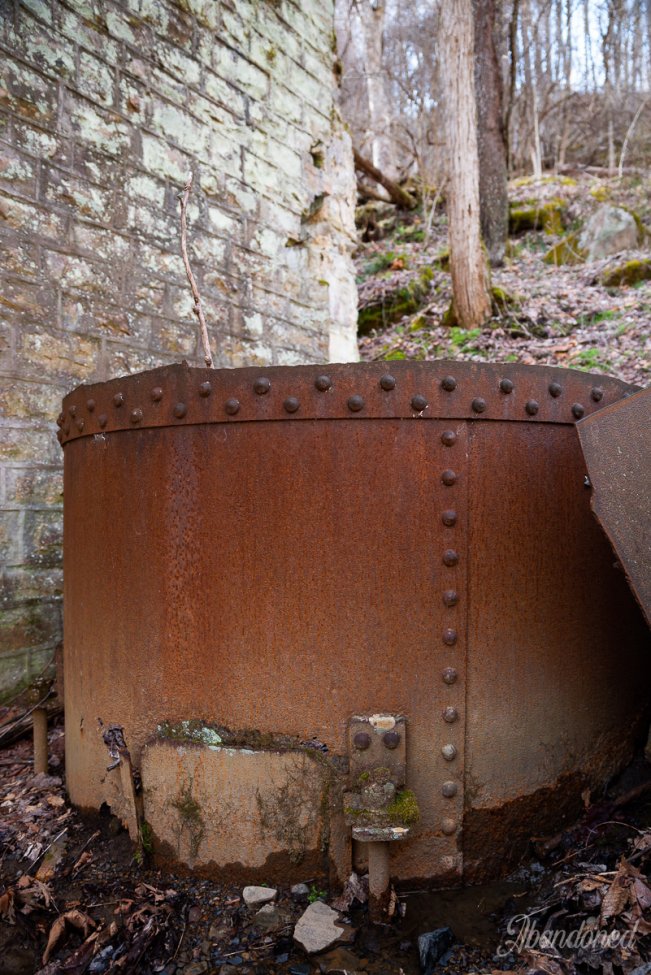Laurel Creek, located between the Greenwood and Backus Mountains in Fayette County, West Virginia, was home to numerous coal mines and camps.
Not long after the Chesapeake & Ohio Railway (C&O) mainline through the New River Gorge was completed in 1873, a 1½-mile branch line was constructed up Laurel Creek from Quinnimont by the Low Moor Iron Company to serve its underground coal operations along the Fire Creek seam. 1 In 1890, the branch line was extended 4.8-miles to Brownwood to service the Greenwood Mines.
On January 1, 1899, the C&O made an agreement with the Quinnimont Coal Company to take over operations of the railroad when the company went into receivership. 1 The agreement was nullified on June 30, 1902, when the coal company resumed operations. The branch line was then extended to Layland in 1904, giving it a total length of 6.3-miles. It was then turned over to the C&O who began operating it as its Laurel Creek Branch.
By 1919, nine mines were operating along Laurel Creek and most had been exhausted by the 1950s, although coal continued to be mined at Layland until the 1980s. 2
Brownwood
Brownwood is a former coal camp developed by the Greenwood Company for their Greenwood Mine, which quarried “smokeless” coal from the Fire Creek seam 2 5 between 1898 and 1951. 2













Layland
Located high in the mountains 7½ miles from New River, nestled between two mountains, is the former company town of Layland. The first settler to the area was H.H. Gentry who came to the area from Albemarle County, Virginia in 1846. 4 Gentry constructed a log cabin, cleared some land, and practiced subsistence farming. He was joined by Ira Gibson, brother-in-law to Gentry, in 1848, followed by Eldridge Gwinn.
In 1891, William Beury acquired a large part of the land owned by Gentry and Gibson and developed an underground coal mine; it never fully opened. 4 6 A post office was established and named after Gentry.
After Beury sold the mining operation to the New River & Pocahontas Consolidated Coal Company who opened the No. 3 mine, 7 Gentry was renamed Layland. 2 4 The company began the development of a company town which included a four room school, a consolidated school with Lawton for Black people, a combination Baptist and Methodist church for white people, a Baptist church for Black people, and a superintendent’s mansion surrounded by native hemlock and vines. 4
The mine was the site of a deadly explosion on March 2, 1915, in which 112 men were either killed by an immediate impact or gas-induced suffocation. 2 3 In the days following, 53 survivors emerged from the mine after erecting barricades to shield themselves from the deadly gas.
By 1919, there were nine mines operating in the valley with most closing by the 1950s. The company had a 60,000-acre lease on additional coal seams that lasted until the 1980s.























Share
Sources
- Stahlgren, Lori, et al. “Industrialization and Boom: 1873-1925.” Kentucky Archaeological Survey, 2007, p. 22, Historical Archaeological Survey: New River Gorge National River and Gauley River National Recreation Area.
- DellaMea, Chris. “Layland, WV and Laurel Creek Mines.” Coalfields of the Appalachian Mountains, 2021.
- “Hellraisers Journal: A Survivor’s Story from the Layland Mine Disaster, Barricaded from After-Damp.” Daily Kos, 11 Mar. 2015.
- Peters, J.T. and H.B. Carden. “Layland.” History of Fayette County, West Virginia. Charleston: Jarrett, 1926. pp. 560-563.
- Peters, J.T. and H.B. Carden. “The Coal Industry.” History of Fayette County, West Virginia. Charleston: Jarrett, 1926. pp. 280.
- Sullivan, Ken. “Joseph Lawton Beury.” West Virginia Encyclopedia. N.p., 25 Sept. 2012. e-WV. Web. 13 Feb. 2014. Article.
- DellaMea, Chris. “Layland, WV.” Coal Camp USA. N.p., n.d. Web. 13 Feb. 2014. Article.



1 Comment
Add Yours →[…] led to the development of Thurmond, Fayette, Kay Moor, Nuttallburg, Thayer, and several mines along Laurel Creek, and the creation of a miners’ hospital at McKendreee, was relatively short […]